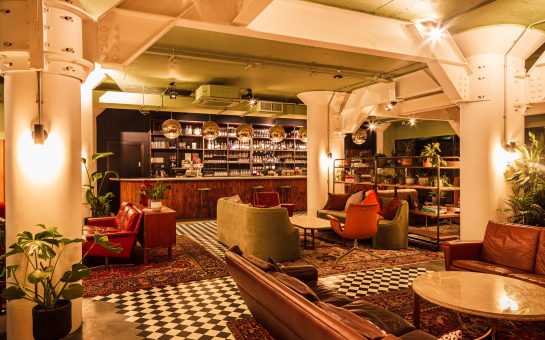With crooked cops, dark alleyways and stylized shots the noir film genre is one that has crafted a cinematic legacy and has influenced movie makers for decades.
The genre is responsible for some of the world’s most iconic and beloved motion pictures so it is no surprise that the influence of film noir goes beyond the silver screen.
As well as the writers and directors that have taken noir as their inspiration there are also a number of artists that have drawn on the broody aesthetics that litter the films.
Cornerhouse’s new contemporary art show, Double Indemnity draws on one of the genre’s classics as its inspiration.
Billie Wilder’s 1944 film follows an insurance salesman, Walter Neff, who begins an affair with married housewife Phyllis Dietrichson and becomes embroiled in her plan to kill her husband.
It’s a dark story of desire, greed and destruction and has been arranged by New York-based writer and curator Michael Connor.
“The exhibition uses the film as a lens through which to explore the structures of patriarchal desire in contemporary society,” Connor said.
Each gallery begins with a quote and still from the film. The first still shows Neff meeting Dietrichson and the works focus on the theme of the femme fatale, with the artists exploring the role of the ‘desired object’.
Sophie Calle’s iconic feminist work The Shadow, created in 1981, in which she arranged for a private detective to follow her for the day, is poignant in the age of 24-hour surveillance.
The work explores the discourse of love, trust and control so effectively – by considering her own and the detective’s viewpoint – that the portrayal of ‘patriarchal desire’ elsewhere in the gallery can seem a little one-dimensional.
The second floor, inspired by Neff’s desire for Phyllis’ daughter, provides an interesting exploration of love, confrontation and culture.
A haunting recording, comprising an amalgamation of videos of children singing a song by collaborative duo Bunny Rodgers and Philip Olszewski sensitively explores how children can become objects of visual consumption for adults.
Connor believes that despite the age of the film the themes that artists can bring out of it are relevant in the modern world.
“Double Indemnity is a film that comes from another era, but is rich with contemporary relevance,” he said.
It’s on the third floor, which focuses on the impact of consumer culture, that the exhibition’s modern relevance becomes most readily apparent.
Delving into the secretive multi-billion pound perfume industry, Anicka Yi, whose work often plays with ideas of materialism, has created a fragrance that evokes the essence of femme fatale, Phyllis.
Describing it as ‘the kind of fragrance you could smell in any airport lounge’ her decision to not subvert the form of this luxury product is as meaningful a comment on consumer culture as the slogans like ‘everything that’s interesting is new’ which flash across Jenny Holzer’s electric billboard instillation.
The exhibit which borrows most from ‘film noir’ imagery comes from Singapore artist Ming Wong who has also used Roman Polanski’s 1974 film Chinatown as part of his inspiration.
His fun three part exhibition includes a dramatic black, white and red billboard and his video, After Chinatown, in which, dressed as an iconic film-noir femme fatale figure, he explores ‘black and white’ Chinatowns around world.
The final part of the exhibit, a photograph of Ming trying on a blonde wig, like the one iconically worn by Barbara Stanwyck as Phyllis, provides a fitting nod to the ephemeral nature of film.
The exhibition is slick, well-curated and re-emphasises some age-old social and cultural themes in both art and film noir and distils them into an interactive and thought-provoking contemporary experience.
Entry is free. September 14 – January 5, 2014. Visitor information call 0161 200 1500 or visit the Cornerhouse website by clicking here.
Image courtesy of movieclips via YouTube, with thanks.
For more on this story and many others, follow Mancunian Matters on Twitter and Facebook.



